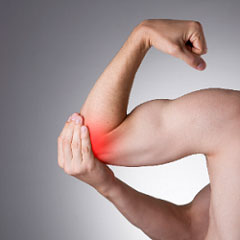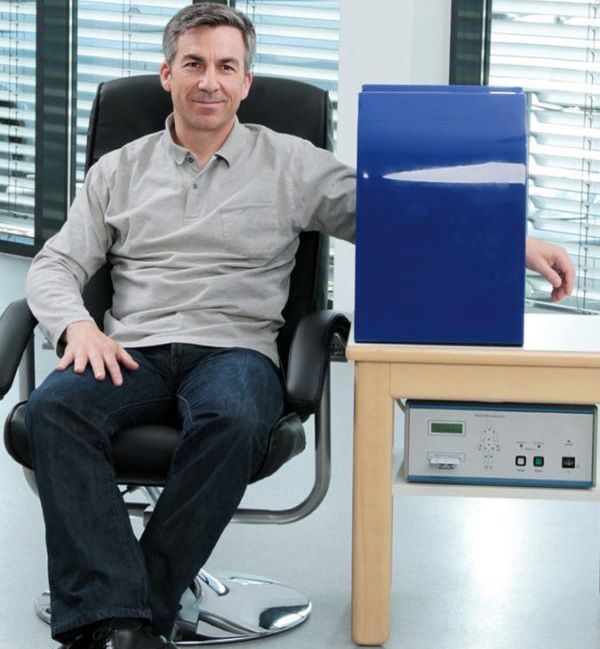
Elbow Pain Treatment
Elbow pain is the sensation of discomfort or pain in the joint that joins the upper arm bone (humerus) to the forearm bones (radius and ulna). The elbow joint plays a vital role in facilitating arm mobility, enabling flexion and extension, as well as forearm rotation. Elbow discomfort may arise due to several factors, and the severity and length of the pain might differ.
Elbow pain can be treated through various approaches depending on the underlying cause. Rest, ice, and over-the-counter pain medications can help alleviate symptoms, while physical therapy exercises strengthen muscles and improve joint function. Bracing or splinting may offer support, and corticosteroid injections can be used for conditions like tennis elbow or bursitis. Occupational adjustments, anti-inflammatory creams, and activity modification are additional measures. In severe cases, surgical intervention may be necessary for conditions such as fractures or ligament tears. Consulting with a healthcare professional for a proper diagnosis and personalized treatment plan is crucial to effectively manage elbow pain.
Common Symptoms Of Elbow Pain
- Weak grip
- Dull ache when at rest
- Pain when making a fist (golfer’s elbow)
- Pain when opening the fingers (tennis
elbow) - Soreness around the affected elbow bump
- Difficulties and pain when trying to grasp objects,
especially with the arm stretched out
Common Causes Of Elbow Pain And Injury
Tendonitis:
Inflammation of the tendons, the tissue that connects muscle to bone. Tendonitis is caused by overuse (repetitive motion) or sudden injury.
Bursitis:
Painful inflammation of the bursae, the fluid-filled sacs that reduce friction between bones, tendons, and muscles.
Tennis elbow (lateral epicondylitis):
Caused by overuse of the forearm, hand and other arm muscles, causing injury to the tendons on the outside area of the elbow. Although this is common in tennis players, anyone who performs repetitive arm and wrist motions may develop tennis elbow, or tendinopathy.
Golfer’s elbow (medial epicondylitis):
Similar to tennis elbow, golfer’s elbow (or medial epicondylitis) is caused by overusing the forearm muscles through repetitive gripping, swinging (such as in golf), or flexing, which causes damage to the tendons (tendonitis) near the elbow. Pain from golfer’s elbow generally occurs on the inside of the elbow and down into the forearm.
Little league elbow (pitcher’s elbow):
Also known as pitcher’s elbow or medial apophysitis, is an overuse injury that affects children and adolescents involved in sports that require a repetitive throwing motion, such as pitching in baseball.
Cubital tunnel syndrome:
Also known as ulnar neuropathy, is the compression or irritation of the ulnar nerve, which runs through the groove along the medial side of the elbow (in the area commonly referred to as the funny bone).
Osteochondritis dissecans:
Occurs in children and adolescents when a piece of bone or cartilage inside a joint loses blood supply. This causes a piece of the cartilage, and usually a thin layer of bone beneath it, to separate and sometimes fall into the joint space.
Fractures:
A fracture is a break in a bone. Fractures may also cause the area around the bone to appear distorted or deformed, especially in open fractures where the bone protrudes from the skin. A stress fracture is a hairline crack in a bone that can worsen during activity over time.
Arthritis:
Arthritis, or osteoarthritis, is loss of cartilage within a joint. While there are many other types of arthritis, including rheumatoid, psoriatic, septic, post-traumatic, and lupus, wear and tear osteoarthritis remains by far the most common.
Bone spurs:
Also known as osteophytes, are bony projections that develop on the surface of the bone, and are often the result of osteoarthritis. Bone spurs usually do not cause symptoms, but can cause swelling, pain, and tearing to the surrounding tissue or tendon. Corns or calluses may also build up over time to provide padding in the area of the bone spur.
Dislocation:
Occurs when the forearm bones (the radius and ulna) move out of alignment with the upper arm bone (the humerus). This is generally the result of trauma.
Ruptured biceps tendon:
The tendon connecting the biceps muscle to the radius may encounter too much force and rupture, leading to pain and a bulging deformity in the arm. It is most often caused by a sudden injury in which heavy weight is resisted by elbow flexion. This injury causes weakness in both elbow flexion and forearm rotation.
When to seek help for elbow pain?
- When pain limits your daily activity
- When ice packs fail to relieve pain
- Anti-inflammatory drugs do not help
- Severe pain or swelling in the elbow region

MAKE AN APPOINTMENT WITH US
Seek professional advice on treatment available for your condition
Book Appointment
